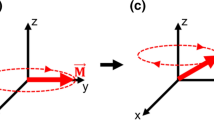Abstract
The composition of metabolites in the coelomic fluid of the starfish Asterina pectinifera and sea urchin Mesocentrotus nudus was studied under normal and hypoxic conditions using NMR spectroscopy. Their change after keeping animals under hypoxia was shown. Sea urchins revealed the presence of anaerobic metabolism, which intensifies under stress in conditions of hypoxia. No similar mechanism of energy metabolism has been found for the starfish. Under conditions of hypoxia, a significant increase in lactate, which is observed in sea urchins, is not observed in the composition of the coelomic liquid of starfish. Asterine tissues contain a mixture of carotenoids in large quantities, the most well-known of which is astaxanthin. The starfish Asterina pectinifera can be used as a raw material for new medicinal, cosmetic, and food products.






Similar content being viewed by others
REFERENCES
Agar, N.S., Rae, C.D., Chapman, B.E., and Kuchel, P.W., 1H-NMR spectroscopic survey of plasma and erythrocytes from selected marsupials and domestic animals of Australia, Comp. Biochem. Physiol., 1991, vol. 99, pp. 575–597.
Artyukov, A.A., Rutskova, T.A., Kupera, E.V., Makhan’kov, V.V., Glazunov, V.P., and Kozlovskaya, E.P., A method for obtaining a carotenoid complex from starfish, RF Patent no. 2469732, 2012.
Barrington, E.J.W., Invertebrate Structure and Function, London: Nelson, 1979, xiv, 2nd ed.
Braun, S., Kalinowski, H.-O., and Berger, S., 150 and More Basic NMR Experiments: A Practical Course, Weinheim: Wiley-VCH, 1998.
Chia, F. and Xing, J., Echinoderm coelomocytes, Zool. Stud., 1996, vol. 35, pp. 231–254.
Dai, Y., Prithiviraj, N., Gan, J., Zhang, X.A., and Yan, J., Tissue extract fractions from starfish undergoing regeneration promote wound healing and lower jaw blastema regeneration of zebrafish, Sci. Rep., 2016, vol. 6, article no. 38693. https://www.nature.com/articles/srep38693. https://doi.org/10.1038/srep38693
Drozdov, K.A., Vshivkova, T.S., Kholin, S.K., and Drozdov, A.L., Comparative analysis of caddisfly (Insecta, Trichoptera) herbivores and predators metabolites by NMR, in 3rd International Symposium of Benthological Society of Asia, Vladivostok, Russian Federation, August 24–27, 2016, Abstract Book, Vladivostok: Dalnauka, 2016, p. 51. ISBN 978-5-8044-1610-3.
Drozdov, A.L., Artyukov, A.A., and Elkin, Yu.N., Cells and epidermis of sand dollar Scaphechinus mirabilis, Russ. J. Dev. Biol., 2017, vol. 48, no. 4, pp. 257–262.
Goldstone, J.V., Hamdoun, A., Cole, B.J., Howard-Asby, M., Nebert, D.W., Scally, M., Dean, M., Epel, D., Hahn, M.E., and Stegeman, J.J., The chemical defensome: environmental sensing and response genes in the Strongylocentrotus purpuratus genome, Dev. Biol., 2006, vol. 300, pp. 366–384. https://doi.org/10.1016/j.ydbio.2006.08.066
Hou Yakun, Vasileva, E.A., Carne, A., McConnell, M., Bekhit, A., El-Din, A., and Mishchenko, N.P., Naphthoquinones of the spinochrome class: occurrence, isolation, biosynthesis and biomedical applications, R. Soc. Chem. Adv., 2018, vol. 8, pp. 32637–32650.
Kas’yanov, V.L., Medvedeva, L.A., Yakovlev, S.N., and Yakovlev, Yu.M., Razmnozhenie iglokozhikh i dvustvorchatykh mollyuskov (Reproduction of Echinoderms and Bivalves), Moscow: Nauka, 1980.
Kolokolova, T.N., Savel’ev, O.Yu., and Sergeev, N.M., Metabolic analysis of biological fluids using 1H-NMR spectroscopy, Zh. Anal. Khim., 2008, vol. 63, no. 2, pp. 118–136.
Lebedev, A.V., Ivanova, M.V., and Krasnovid, N.L., Interaction of natural polyhydroxy-1,4-naphthoquinones with superoxide anion-radical, Biochemistry, 1999, vol. 64, pp. 1273–1278.
Liu, L., Zhu, Y., Li, J., Wang, M., Lee, P., Du, G., and Chen, J., Microbial production of propionic acid from propionibacteria: current state, challenges and perspectives, Crit. Rev. Biotech., 2012, vol. 32, no. 4, pp. 374–381.
Nicholson, J.K. and Wilson, I.D., High resolution proton NMR spectroscopy of biological fluids, Prog. NMR Spectrosc., 1989, vol. 21, pp. 449–501.
Novikov, V.L., Shestak, O.P., Mishchenko, N.P., Fedoreev, S.A., Vasileva, E.A., Glazunov, V.P., and Artyukov, A.A., Oxidation of 7-ethyl-2,3,5,6,8-pentahydroxy-1,4-naphthoquinone (echinochrome A) by atmospheric oxygen. 1. Structure of dehydroechinochrome, Russ. Chem. Bull., 2018, vol. 67, pp. 282–290.
Prudnikova, T.N. and Roslyakov, Yu.F., Propionic acid in the metabolism of living organisms, Izv. Vuzov, Pishch. Tekhnol., 1994, nos. 5–6, pp. 23–27.
Shang, X.H., Liu, X.Y., and Zhang, J., Traditional Chinese medicine–sea urchin, Mini. Rev. Med. Chem., 2014, vol. 14, no. 6, pp. 537–542. www.ncbi.nlm.nih.gov/pubmed/ 24873818.
Smith, V.J., The echinoderms, in Invertebrate Blood Cells, Ratcliffe, N.A. and Rowley, A.F., Eds., London: Academic, 1981, vol. 2, pp. 513–562.
Vinnikova, V.V. and Drozdov, A.L., The ultrastructure of spines in sea urchins of the family Strongylocentrotidae, Biol. Bull., 2011, vol. 38, no. 9, pp. 861–867. https://doi.org/10.1134/S1062359011090093
World Register of Marine Species: Mesocentrotus. htpp://www.marinespesies.org.
Author information
Authors and Affiliations
Corresponding author
Ethics declarations
Conflict of interest. The authors declare that they have no conflict of interest.
Statement on the welfare of animals. All applicable international, national, and/or institutional guidelines for the care and use of animals were followed.
Rights and permissions
About this article
Cite this article
Drozdov, K.A., Artyukov, A.A. & Drozdov, A.L. Changes in the Composition of Celomic Fluid Metabolites of the Black Sea Urchin Mesocentrotus nudus (Echinoidea) and the Starfish Asterina pectinifera (Asteroidea) under Conditions of Hypoxia Stress. Biol Bull Russ Acad Sci 48, 407–412 (2021). https://doi.org/10.1134/S1062359021040075
Received:
Revised:
Accepted:
Published:
Issue Date:
DOI: https://doi.org/10.1134/S1062359021040075




